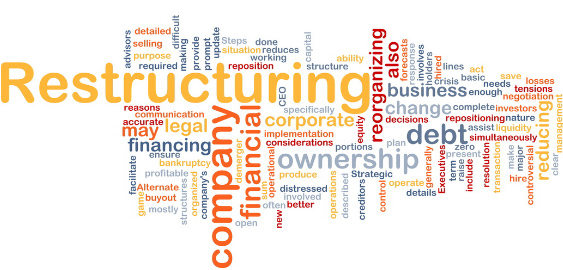Is a Company Restructure Good?
Introduction
Companies, large or small, often undergo restructuring to adapt to changing market conditions, improve efficiency, and stay competitive. A restructure involves making significant changes to the organization’s structure, processes, and people. It can be a challenging and stressful time for employees, management, and stakeholders. However, if done correctly, it can lead to positive outcomes for the company’s future. This article will discuss whether a company restructure is good and what factors to consider before implementing one.

Pros of a Company Restructure
There are several benefits of a company restructure, including:
1. Improved Efficiency
A company restructure can lead to an improvement in efficiency. By reorganizing the company’s structure, resources can be allocated more effectively, and communication and decision-making can become more streamlined. This can lead to cost savings and better use of time and resources.
2. Increased Flexibility
Restructuring can make a company more flexible and adaptable to changing market conditions. By reorganizing teams, the company can respond quickly to new opportunities or challenges. This can lead to a competitive advantage in the marketplace.
3. Improved Employee Morale
Restructuring can also lead to improved employee morale. Employees may feel that their roles are more clearly defined, and they may have more opportunities for career advancement. This can lead to a more motivated and engaged workforce.
Cons of a Company Restructure
There are also some potential drawbacks to a company restructure, including:
1. Disruption to Operations
Restructuring can disrupt the company’s operations, especially if it involves significant changes to the company’s structure or processes. This can lead to a loss of productivity and revenue, which can be costly in the short term.
2. Employee Resistance
Employees may resist changes to their roles or reporting lines, especially if they feel that their job security is at risk. This can lead to low morale, decreased productivity, and a loss of talent.
3. Cultural Changes
A company restructure can also lead to cultural changes within the organization. This can be difficult to manage, and it may take time for the new culture to take hold. In some cases, cultural changes can lead to a loss of identity or values, which can be detrimental to the company’s reputation.
Factors to Consider Before Restructuring
Before implementing a company restructure, it’s essential to consider several factors, including:
1. Objectives
What are the company’s objectives for restructuring? Is it to improve efficiency, increase profitability, or respond to changing market conditions? The objectives should be clear and well-defined to ensure that the restructuring achieves the desired outcomes.
2. Timing
When is the best time to implement the restructuring? Is it during a period of growth or decline? The timing of the restructuring can have a significant impact on its success.
3. Communication
Effective communication is crucial when implementing a company restructure. Employees, stakeholders, and customers should be informed about the reasons for the restructuring, the changes that will be made, and how it will affect them.
4. Implementation
The implementation of the restructuring should be carefully planned and executed. This may involve working with external consultants or advisors to ensure that the restructuring is successful.

Conclusion
In conclusion, a company restructure can be beneficial if done correctly. It can lead to improved efficiency, increased flexibility, and improved employee morale. However, there are potential drawbacks to consider, including disruption to operations, employee resistance, and cultural changes.
Before implementing a restructure, it’s essential to consider several factors, including the company’s objectives, timing, communication, and implementation. If these factors are carefully considered and managed, a restructure can lead to positive outcomes for the company’s future.
Overall, whether a company restructure is good or not depends on the company’s specific situation and objectives. It’s important to weigh the potential benefits and drawbacks carefully and seek expert advice if necessary to ensure that the restructure is successful. Click here for more information.

